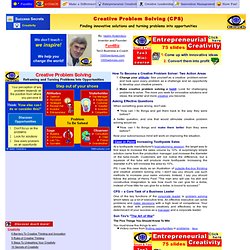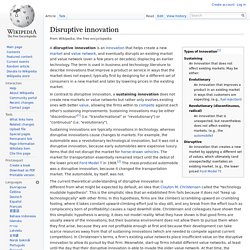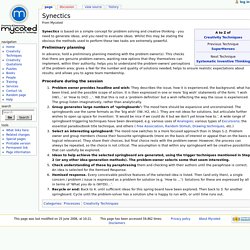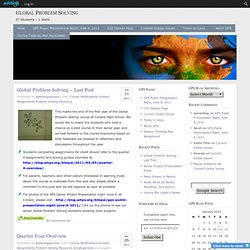

1000 ADVICES - Free smart advices and inspirational tips from great achievers and business champions! - YOUR INSPIRATIONAL LIFE-BUSINESS SYNERGY e-COACH! SUCCESS 360 e-COACH. Success Secrets, How To Become Successful, How To Succeed in Life and Business, Personal Success, Business Success, Entrepreneurial Success, Family Success, Customer Success (free advice, free tips, free e-coach, Vadim Kotelnikov) - B.
Cooperative Problem Solving. CREATIVE PROBLEM SOLVING (CPS) - Finding innovative solutions and turning problems into opportunities (Vadim Kotelnikov) How To Become a Creative Problem Solver: Two Action Areas Change your attitude: See yourself as a creative problem-solver and look upon every problem as a challenge and an opportunity to develop your creative powers.

Make creative problem solving a habit: Look for challenging problems to solve. The more you seek for innovative solutions and ideas, the smarter and more creative you become. Asking Effective Questions. Problem Solving Skills from MindTools. SCAMPER technique training for lateral thinking. The SCAMPER technique uses a set of directed questions which you answer about your probortunity in order to come up with new ideas.

The stimulus comes from forcing yourself to answer questions which you would not normally pose. The questions direct you to thinking about a probortunity in ways which typically come up with new ideas. SCAMPER is an acronym which stands for questions relating to the following: In essence you should ask yourself questions relating to each of the SCAMPER words to come up with new ideas. Spend some time developing questions which challenge your current way of thinking. Brainstorming Toolbox software can be used to spark off suitable questions or you can generate your own manually. Creative-problem-solving-with-scamper-Large.jpg (Image JPEG, 1197x827 pixels) - Redimensionnée (92%) Creative Problem Solving. SWOT analysis. A SWOT analysis, with its four elements in a 2×2 matrix.

A SWOT analysis (alternatively SWOT matrix) is a structured planning method used to evaluate the strengths, weaknesses, opportunities and threats involved in a project or in a business venture. A SWOT analysis can be carried out for a product, place, industry or person. It involves specifying the objective of the business venture or project and identifying the internal and external factors that are favorable and unfavorable to achieve that objective.
Some authors credit SWOT to Albert Humphrey, who led a convention at the Stanford Research Institute (now SRI International) in the 1960s and 1970s using data from Fortune 500 companies.[1][2] However, Humphrey himself does not claim the creation of SWOT, and the origins remain obscure. The degree to which the internal environment of the firm matches with the external environment is expressed by the concept of strategic fit. Disruptive innovation. Sustaining innovations are typically innovations in technology, whereas disruptive innovations cause changes to markets.

For example, the automobile was a revolutionary technological innovation, but it was not a disruptive innovation, because early automobiles were expensive luxury items that did not disrupt the market for horse-drawn vehicles. The market for transportation essentially remained intact until the debut of the lower priced Ford Model T in 1908. The mass-produced automobile was a disruptive innovation, because it changed the transportation market.
Synectics. Synectics is based on a simple concept for problem solving and creative thinking - you need to generate ideas, and you need to evaluate ideas.

Whilst this may be stating the obvious the methods used to perform these two tasks are extremely powerful. Preliminary planning In advance, hold a preliminary planning meeting with the problem owner(s). This checks that there are genuine problem owners, wanting new options that they themselves can implement, within their authority; helps you to understand the problem-owners' perceptions of the problem area; gives a feel for the number and quality of solutions needed; helps to ensure realistic expectations about results; and allows you to agree team membership.
Procedure during the session Problem owner provides headline and wish: They describes the issue, how it is experienced, the background, what has been tried, and the possible scope of action. The Art of Complex Problem Solving. Eight Disciplines Problem Solving.
Eight Disciplines Problem Solving (8D) is a method used to approach and to resolve problems, typically employed by quality engineers or other professionals.

Its purpose is to identify, correct and eliminate recurring problems, and it is useful in product and process improvement. It establishes a permanent corrective action based on statistical analysis of the problem (when appropriate) and focuses on the origin of the problem by determining its root causes. Although it originally comprised eight stages, or 'disciplines', it was later augmented by an initial planning stage.
The 8D follows the logic of the PDCA cycle. The disciplines are: Problem SoProblem Solving Techniques. .

:VirtualSalt Robert Harris Version Date: January 5, 2002 As with creative thinking, flexibility is a crucially important feature in problem solving. Many of these techniques you will begin to use regularly for each major problem you address. Others you will use selectively. FPSPI. L'apprentissage par problèmes ou comment détruire le mythe de «la» démarche scientifique. Global Problem Solving. Jun 11 2011 Global Problem Solving – Last Post This marks the end of the first year of the Global Problem Solving course at Conard High School.

We would like to thank the students who took a chance on a pilot course in their senior year, and we look forward to the course improving based on their feedback we received in reflections and discussions throughout the year. Students completing assignments for credit should refer to the quarter 4 assignments and scoring guides overview at: parents, teachers, and other visitors interested in learning more about the course or materials from this web site, please attach a comment to this post and we will respond as soon as possible.For photos of the GPS Senior Project Presentation night June 9, at Conard, please visit: Click on the photos to see our senior Global Problem Solving students showing their projects.
Apr 05 2011 Quarter Four Overview. Koios.org process-cycles. Koios - The online platform for solving complex social challenges. Global Problem Solving. Pirmaid+1.jpg (Image JPEG, 460x372 pixels) Synectics. Synectics is a problem solving methodology that stimulates thought processes of which the subject may be unaware.

This method was developed by George M. Prince (April 5, 1918 - June 9, 2009)[1] and William J.J. Gordon, originating in the Arthur D. Little Invention Design Unit in the 1950s. History[edit] The process was derived from tape-recording (initially audio, later video) meetings, analysis of the results and experiments with alternative ways of dealing with the obstacles to success in the meeting.
The name Synectics comes from the Greek and means "the joining together of different and apparently irrelevant elements Gordon and Prince named both their practice and their new company Synectics, which can cause confusion as people not part of the company are trained and use the practice. Theory[edit] How to Improve It? Ask Those Who Use It.
Some Differences Between Experts and Novices. Harrisburg Presentation Resources Here are some resources from my presentation in Harrisburg.

Defining and Exploring Gamification from Karl Kapp Here is some additional information. Mode alternatif de résolution des conflits. Un article de Wikipédia, l'encyclopédie libre. Les Modes Alternatifs de Résolution des Conflits (MARC) sont des pratiques placées en regard des systèmes mis en place par les États et les gouvernements (recours contentieux, système judiciaire) impliquant un règlement à la fois juridique et judiciaire d'un différend. Alternative Dispute Resolution. Alternative dispute resolution (ADR) (also known as external dispute resolution in some countries, such as Australia[1]) includes dispute resolution processes and techniques that act as a means for disagreeing parties to come to an agreement short of litigation.
It is a collective term for the ways that parties can settle disputes, with (or without) the help of a third party. Despite historic resistance to ADR by many popular parties and their advocates, ADR has gained widespread acceptance among both the general public and the legal profession in recent years. In fact, some courts now require some parties to resort to ADR of some type, usually mediation, before permitting the parties' cases to be tried (indeed the European Mediation Directive (2008) expressly contemplates so-called "compulsory" mediation; this means that attendance is compulsory, not that settlement must be reached through mediation). Creative problem solving. Creative problem-solving, a type of problem solving, is the mental process of searching for a new and novel creative solution to a problem, a solution which is novel, original and not obvious. Creative solution types[edit] The creative solution[edit] Modes alternatifs de résolution des conflits.
Ce Livre vert s'inscrit dans le cadre des travaux en cours au sein de la Communauté européenne en vue de créer un espace de liberté, de sécurité et de justice, et plus particulièrement d'assurer un meilleur accès à la justice. Dans le prolongement du plan d'action de Vienne et des conclusions du Conseil européen de Tampere, le Conseil des ministres de la Justice et des Affaires intérieures avait invité la Commission à présenter un Livre vert sur les modes alternatifs de résolution des conflits relevant du droit civil et commercial autres que l'arbitrage, qui "fasse le point de la situation existante et lance une large consultation en vue de préparer les mesures concrètes à prendre. Les modes alternatifs de résolution des conflits, comme la médiation, permettent en effet aux parties de renouer le dialogue pour trouver une solution à leur conflit, au lieu de les enfermer dans une logique de confrontation dont normalement sortent un vainqueur et un vaincu.
Résolution de problème. Un article de Wikipédia, l'encyclopédie libre. Morphological analysis (problem-solving) Morphological Analysis or General Morphological Analysis is a method developed by Fritz Zwicky (1967, 1969) for exploring all the possible solutions to a multi-dimensional, non-quantified complex problem.[1] General Morphology was developed by Fritz Zwicky, the Bulgarian-born, Swiss-national astrophysicist based at the California Institute of Technology. Transforming Complexity into Opportunity. Storytelling for Problem-Solving. Osborn: Creative Problem-Solving Process.
3 - La boîte à outils (classée par typologie d'outils) The Future: New Ways of Solving Problems. Originally published in CG: The Magazine for Compugraphic Customers, 1988. How would you define the terms “visual communication” and “computer graphics”? Everybody is involved in visual communication. When you start to talk about people using technology to communicate visually, most of what we use the computer for today is for simulating paper.
We are seeing now with hypermedia the move from using the computer to simulate paper to using it as the place where you create information and perform manipulation and actually see things—models of real, imagined, or projected worlds. Argument map. A schematic argument map showing a contention (or conclusion), supporting arguments and objections, and an inference objection. Argument maps are commonly used in the context of teaching and applying critical thinking.[2] The purpose of mapping is to uncover the logical structure of arguments, identify unstated assumptions, evaluate the support an argument offers for a conclusion, and aid understanding of debates. Argument maps are often designed to support deliberation of issues, ideas and arguments in wicked problems.[3] Key features[edit] A number of different kinds of argument map have been proposed but the most common, which Chris Reed and Glenn Rowe called the standard diagram,[5] consists of a tree structure with each of the reasons leading to the conclusion.
According to Doug Walton and colleagues, an argument map has two basic components: "One component is a set of circled numbers arrayed as points. Open-Source Argument Mapping. 20 Points to Help You Solve Problems. Problem Solving Frameworks. UNE - Psychology - Over Fifty Problem Solving Strategies Explained. Problem Solving. Problem solving consists of using generic or ad hoc methods, in an orderly manner, for finding solutions to problems. Some of the problem-solving techniques developed and used in artificial intelligence, computer science, engineering, mathematics, medicine, etc. are related to mental problem-solving techniques studied in psychology. How to Solve It. Category:Problem solving. Methods.